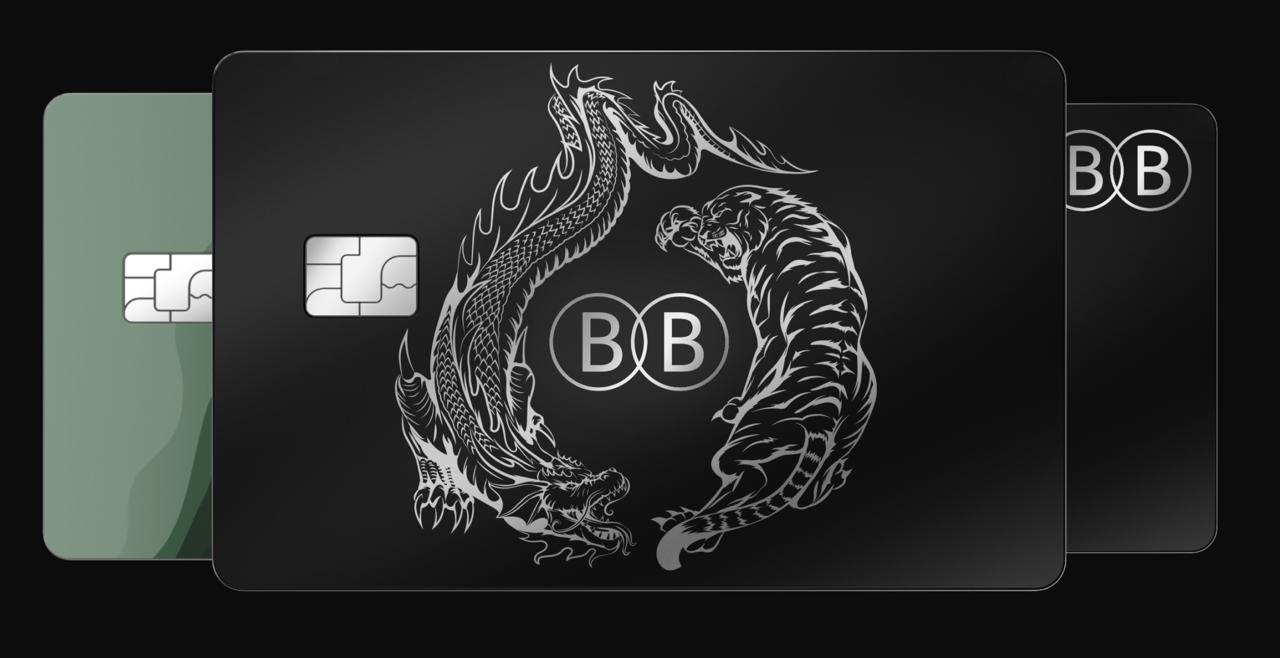Business
Transform Your Expertise into a Profitable Online Coaching Business with Jon Penberthy

Transforming your expertise into a successful coaching business requires a strategic approach to monetizing your knowledge, with a strong emphasis on client satisfaction and adaptability to their evolving needs. By prioritizing these factors, you can build a coaching practice that flourishes, provides long-term value to your clients, and supports sustained growth for your business.
The potential for this growth is underscored by the global online coaching market, which was valued at $3.2 billion in 2022 and is projected to reach $11.7 billion by 2032, reflecting a compound annual growth rate (CAGR) of 14% from 2023 to 2032.
Jon Penberthy, founder of AdClients and a leader in online coaching, highlights the significance of the knowledge economy in today’s marketplace. He notes, “The knowledge economy is now worth over half a trillion dollars a year. That means every year, people like you and me are paying others—not for physical products, but for the exchange of knowledge.” This shift presents a compelling opportunity for those willing to leverage their expertise in this evolving market.
Penberthy’s philosophy emphasizes the power of positive thinking and challenges traditional views on credentialism and rigid professional roles. He asserts, “Nowadays you only need to be one step ahead of someone else for them to be willing to hand back some money to learn from you.” His success as a how-to coach exemplifies this approach, showing that with the right mindset, anyone can turn their knowledge into a flourishing business.
Essential Steps to Starting Your Online Business
At the heart of any business plan is the decision about what type of product you will provide in the online marketplace. Jon Penberthy explores various possibilities, from relationship counseling to pet care, ultimately settling on a widely sought-after internet offering: personal health and fitness.
“Let’s say you do not have a personal trainer certificate, but you have figured out a specific nutrition and exercise regime that works,” he states. “There are people out there who want to look how you look and are willing to pay you for your knowledge … the opportunities are endless – you just have to ask yourself what you know that is a little bit more than those around you. That’s the starting point for your own training program.”
The next step involves packaging your training for an online audience, and Penberthy recommends creating a series of recorded videos as an effective approach. This leads to the question of how much to cover in the initial video and the order of presentation.
He suggests finding friends and family who are interested in your topic and willing to learn more. By selecting a few volunteers and teaching them over several weeks for free, while taking diligent notes on what works and what doesn’t, the teaching process will gradually reveal itself.
Build a Sales Funnel

Regardless of how your business attracts customers, potential buyers often follow a similar path, asking common questions and taking comparable steps when deciding whether to make a purchase. A sales funnel is an effective way to visualize this journey, offering valuable insights into the customer experience. It helps you see the sales process through their perspective while also serving as a practical training tool for your sales team.
Penberthy highlights the importance of this approach, “A sales funnel helps transition potential customers from being strangers to ready-to-buy clients,” he explains. By breaking the process into a series of steps, the sales funnel gradually informs and engages potential customers, guiding them toward a purchase decision without overwhelming them with information.
Attracting Attention—The ‘Eyeball’ Factor
Once you’ve understood the initial steps for setting up your online coaching or course, the next challenge is attracting people to your funnel, often referred to as the “eyeball” factor. “Bringing traffic to your site involves content creation and deciding between organic (unpaid) traffic through various social media channels or, if your budget allows, paid traffic,” Penberthy explains.
Penberthy explains that with organic traffic, individuals will be active on social media, creating content designed to build an audience interested in their topic. He adds that if one can invest some funds, paid advertising—especially on YouTube—can be an excellent starting point, as it delivers instant traffic compared to the uncertain outcomes of organic posts.
Once the advertising strategy is established, the next step is to continually refine and enhance the course, making it more concise, message-rich, and easier for potential customers to understand what is being offered.
He emphasizes that this process isn’t just about feeling good about one’s work; it’s about boosting conversions. The more effective the campaign, the more referrals satisfied customers will provide when recommending the program. A stronger program also allows for higher pricing for the services offered.
After refining your online advertising strategies and advancing your course or coaching development, the next step is to scale up. Penberthy suggests that this may initially involve what he refers to as “the pop-up offer” or one-on-one coaching, enabling you to start selling your course in 48 hours or less.
He notes that this phase requires a significant investment of time but is crucial for growing your business with clients who will not only pay for your expertise but also recommend your courses to a broader audience. However, he emphasizes the need to leverage your time effectively, as there are only so many hours in a day.
The key to success in online courses lies in combining “low-ticket” (mass appeal) content with “high-ticket” one-on-one training. “I take the stand-alone low-ticket coaching and wrap it around the one-on-ones to create the concept of “high-ticket” group coaching, which is a limited-subscriber webinar-based training pitched at high-end clients who are willing to pay a premium to overcome their seeming lack of success in the online marketplace,” Penberthy says.
By implementing this strategy, he adds, you can not only maximize your time in the business space and free up energy for friends and family but also potentially increase your monthly income to four or five figures, ultimately leading to an annual income of six to seven figures.
Jon Penberthy’s insights provide a clear roadmap, emphasizing the importance of understanding your audience, leveraging effective marketing strategies, and continually refining your offerings. By combining low-ticket and high-ticket training approaches, you can maximize your reach while delivering exceptional value to your clients.
As you embark on this path, remember that your knowledge and passion can not only lead to financial success but also empower others to achieve their goals. Embrace the opportunities ahead, and watch as you build a thriving coaching business that makes a lasting impact.
Business
Remote Professionals Getting More Value for Their Work Thanks to Borderless Banking

Not too long ago, the idea of working remotely from an island in Thailand or a co-working space in Berlin sounded like the kind of fantasy only tech moguls or backpacking freelancers could afford.
Fast forward to today, and it’s as good as a global reality. Millions of professionals have cut the cord from traditional office life in exchange for flexibility, freedom, and a work-life balance that fits their personal rhythm and not their employer’s timezone.
However, as remote work has reshaped how people earn a living, it’s also pointed out the existing limits to most of the world’s financial systems. Traditional banking simply wasn’t built for a workforce that’s always on the move, operating in multiple currencies, and getting paid across borders.
Thankfully, that’s where borderless banking like Black Banx have proven vital, and has quietly transformed the way money is managed for people vacationing and working overseas alike.
The Rise of the Remote Work Economy
Remote work isn’t just a pandemic-era trend that faded with Zoom fatigue—it’s become a defining feature of the modern workforce. A recent survey revealed that over 39% of Gen Z and Millennials planned to live and work abroad for extended periods this year, many staying six months or more in a single location. That’s beyond a short trip, and can be considered as good as a sabbatical with a substantial lifestyle shift.
According to recent estimates, the digital nomad economy now also contributes as much as US$787 billion annually to the global economy. And this isn’t just entry-level gig work. A third of digital nomads earn between US$100,000 and US$250,000, while another third take in US$50,000 to US$100,000 annually.
It is indeed evident that the manner in which many make a living has changed. Unfortunately, most financial systems haven’t kept up.
Where Traditional Banks Are Still Falling Short
For those who have ever tried to open a bank account abroad or receive payment from a foreign client, they already know the drill: the paperwork is endless, delays are frustrating, and the fees? So much to do, even for the smallest amounts of money.
Just to name few of the hurdles remote workers still face with conventional banking:
- Account setup restrictions: Need proof of residence, tax IDs, or a local job offer—things many digital nomads simply don’t have.
- Slow international transfers: Payments can take days to process, which is a nightmare when rent’s due.
- High foreign exchange fees: Currency conversions often come with steep, hidden costs.
- Limited multi-currency support: Most banks still force users to operate in a single currency, making financial planning chaotic at best.
And perhaps most tellingly, many banks have digitized their operations but haven’t personalized their services. According to Accenture’s 2025 Banking Trends Report, while digital transformation has improved efficiency, it often sacrifices the customer experience. That’s not great news for people who live outside the lines.
Borderless Banking for Professionals Across the Globe
The concept of borderless banking goes far beyond wiring money internationally. Fundamentally, it’s also about being able to eliminate the friction between people and their money, no matter where they are in the world, and maintaining an ecosystem where geography, bureaucracy, and currency don’t stand in the way of financial freedom.
A working example of this is Black Banx, a Toronto-based fintech founded by German billionaire Michael Gastauer. Since launching globally in 2015, it has grown to serve over 78 million clients in 180+ countries as of Q1 2025, proof that people take to digital banking solutions when it is accessible, affordable, and is useful in just about any locale.
In the first three months of this year, Black Banx had also earned US$4.3 billion in revenue and US$1.6 billion in pre-tax profit, more than double from the same quarter the previous year and showing it has consistently delivered tangible value to global customers—remote professionals included
How Borderless Banking Maximizes Value for Remote Workers
1. Instant Account Access—No Strings Attached
The times of hunting down local branches or collecting endless documents just to open an account are finished. With borderless banks, users can open an account in minutes using just a photo ID—no proof of address or income required. That’s a lifesaver for anyone living outside their passport country or hopping from one location to another.
2. Multi-Currency Mastery
Managing money in multiple currencies used to mean juggling several accounts—or worse, losing money on conversions. Borderless platforms like Black Banx support 28 FIAT currencies and allow real-time currency conversions at competitive rates. That means remote workers can:
- Invoice clients in one currency
- Spend or save in another
- Hedge against local currency fluctuations
- Avoid excessive conversion fees altogether
3. Seamless, Real-Time Global Payments
Getting paid late, or paying others late, isn’t just inconvenient; it can damage relationships and disrupt your cash flow. With real-time payment support, remote workers can receive funds instantly, no matter where their clients are. This is particularly valuable for freelancers and entrepreneurs juggling multiple contracts across time zones.
Plus, bulk payment features and API integration streamline processes for those running teams or businesses.
4. Built-In Crypto Options
It isn’t surprising that many digital nomads are already deep into crypto. Whether it’s for investment, faster transactions, or avoiding traditional finance red tape, crypto is becoming essential.
Since 2016, Black Banx has allowed users to send, receive, and convert crypto (like BTC and ETH) within their accounts. That integration saves users from having to manage separate crypto wallets, and adds another layer of flexibility to their financial toolkit.
5. Secure Transactions
Remote workers often log in to work from cafés, coworking spaces, and airports, to name a few. Of course, this flexibility of being able to work almost anywhere should never come at the cost of security. Borderless banks like Black Banx use end-to-end encryption, AI fraud detection, and two-factor authentication to keep accounts safe from risky elements.
Financial Freedom, Not Just Convenience
Perhaps the most overlooked benefit of borderless banking is the freedom it provides. Not just to access money, but to fully participate in the global economy. For millions of professionals in underbanked regions like Africa, Latin America, Southeast Asia, borderless banking has become a gateway to financial inclusion and a way to take on opportunities that typically wouldn’t be available to them if not remote.
By removing barriers to entry, platforms like Black Banx empower underserved individuals to both take control of their finances and increase their earning power by working with companies from higher paying markets. This democratization of finance isn’t just good for individuals, it’s good for the global economy as a whole.
As Black Banx CEO Michael Gastauer put it: “Our multi-currency solutions enable businesses to tap into global talent without worrying about payment complexities. We make cross-border transactions as seamless as local ones.”
The Road Ahead
By 2030, the number of digital nomads worldwide is expected to soar past 60 million, according to the Forbes Technology Council. That means tens of millions of workers will be navigating foreign currencies, time zones, and financial systems—all while expecting the same seamless experience they’d get at home.
Indeed, remote professionals aren’t just looking for places to work—they’re looking for systems that work for them. In a lifestyle built on flexibility, traditional banking is proving too rigid, too slow, and too expensive.
Borderless banking services like those offered by the likes of Black Banx, on the other hand, offer exactly what today’s global workforce needs: instant access, multi-currency support, real-time payments, crypto integration, and enterprise-level security—all in a streamlined experience.
-

 Tech4 years ago
Tech4 years agoEffuel Reviews (2021) – Effuel ECO OBD2 Saves Fuel, and Reduce Gas Cost? Effuel Customer Reviews
-

 Tech6 years ago
Tech6 years agoBosch Power Tools India Launches ‘Cordless Matlab Bosch’ Campaign to Demonstrate the Power of Cordless
-

 Lifestyle6 years ago
Lifestyle6 years agoCatholic Cases App brings Church’s Moral Teachings to Androids and iPhones
-

 Lifestyle4 years ago
Lifestyle4 years agoEast Side Hype x Billionaire Boys Club. Hottest New Streetwear Releases in Utah.
-

 Tech7 years ago
Tech7 years agoCloud Buyers & Investors to Profit in the Future
-

 Lifestyle5 years ago
Lifestyle5 years agoThe Midas of Cosmetic Dermatology: Dr. Simon Ourian
-

 Health6 years ago
Health6 years agoCBDistillery Review: Is it a scam?
-

 Entertainment6 years ago
Entertainment6 years agoAvengers Endgame now Available on 123Movies for Download & Streaming for Free
